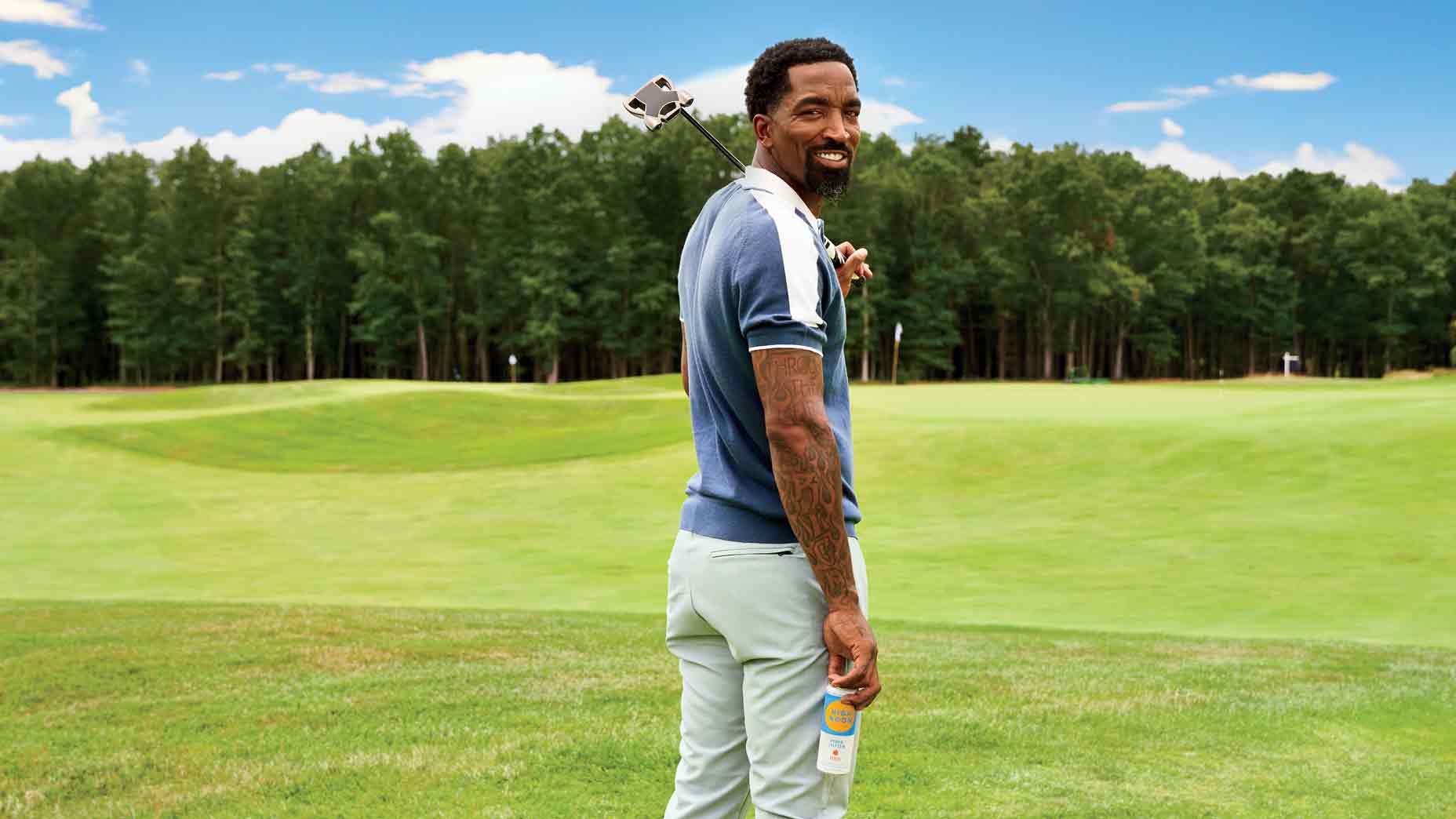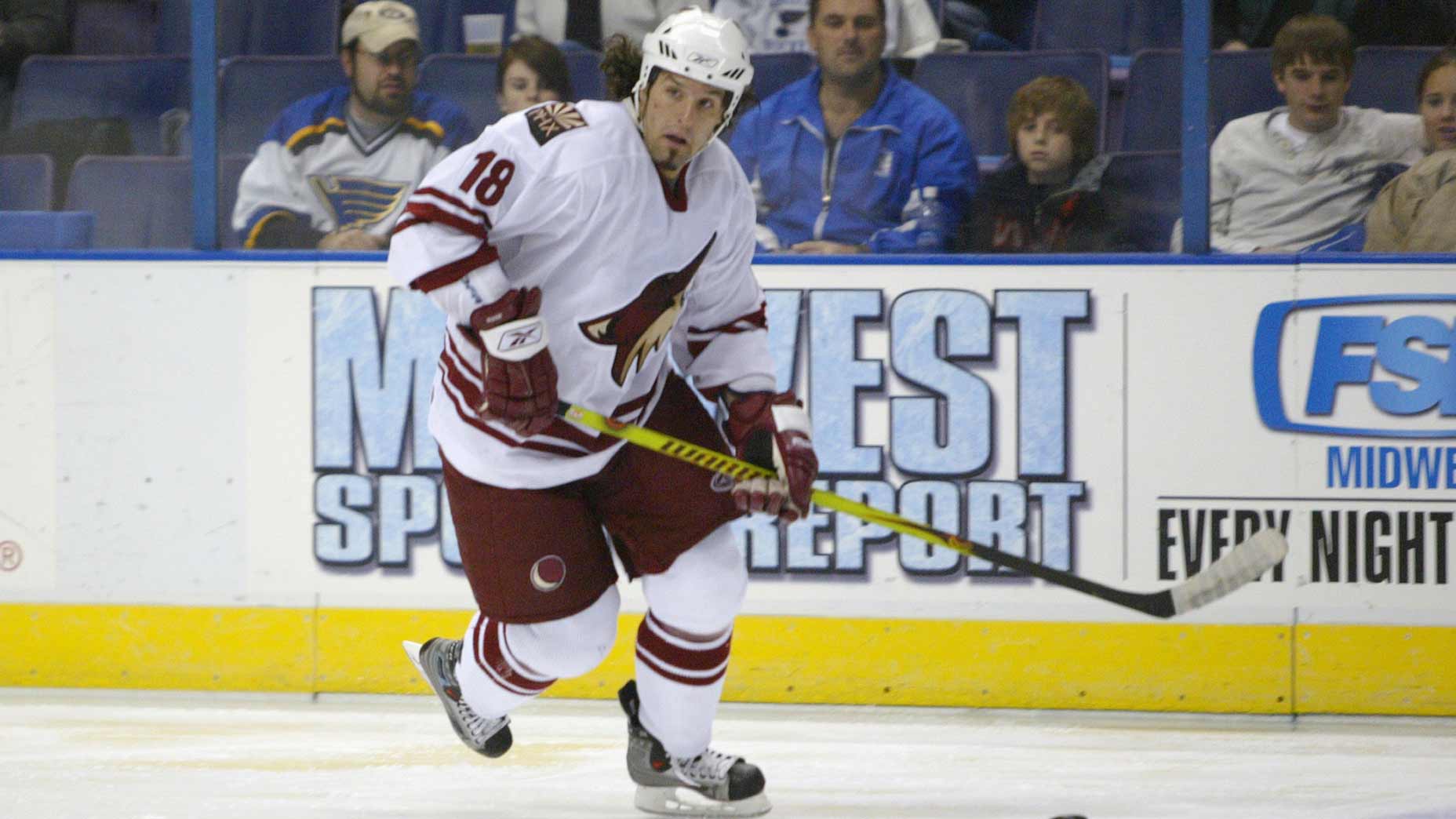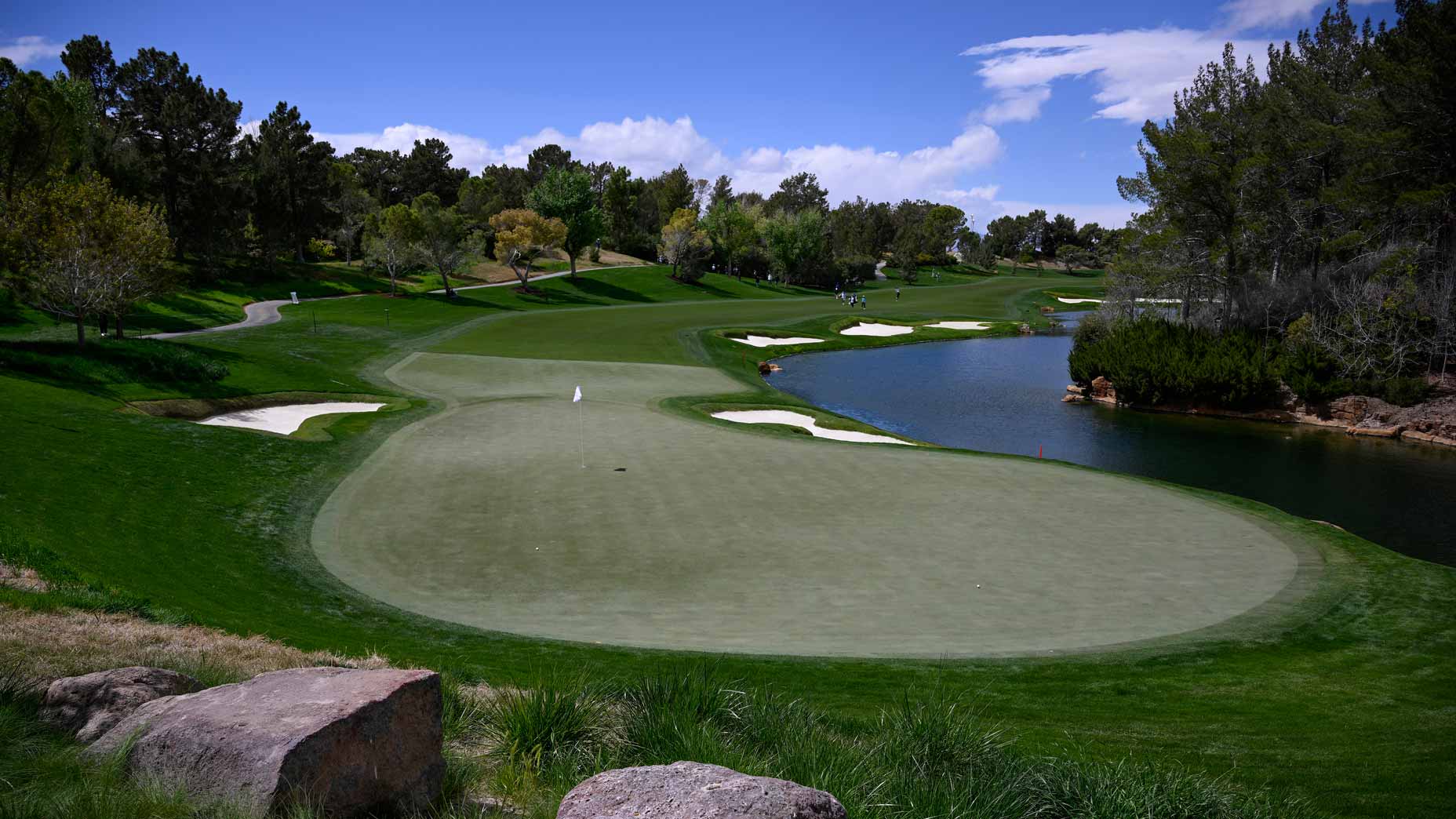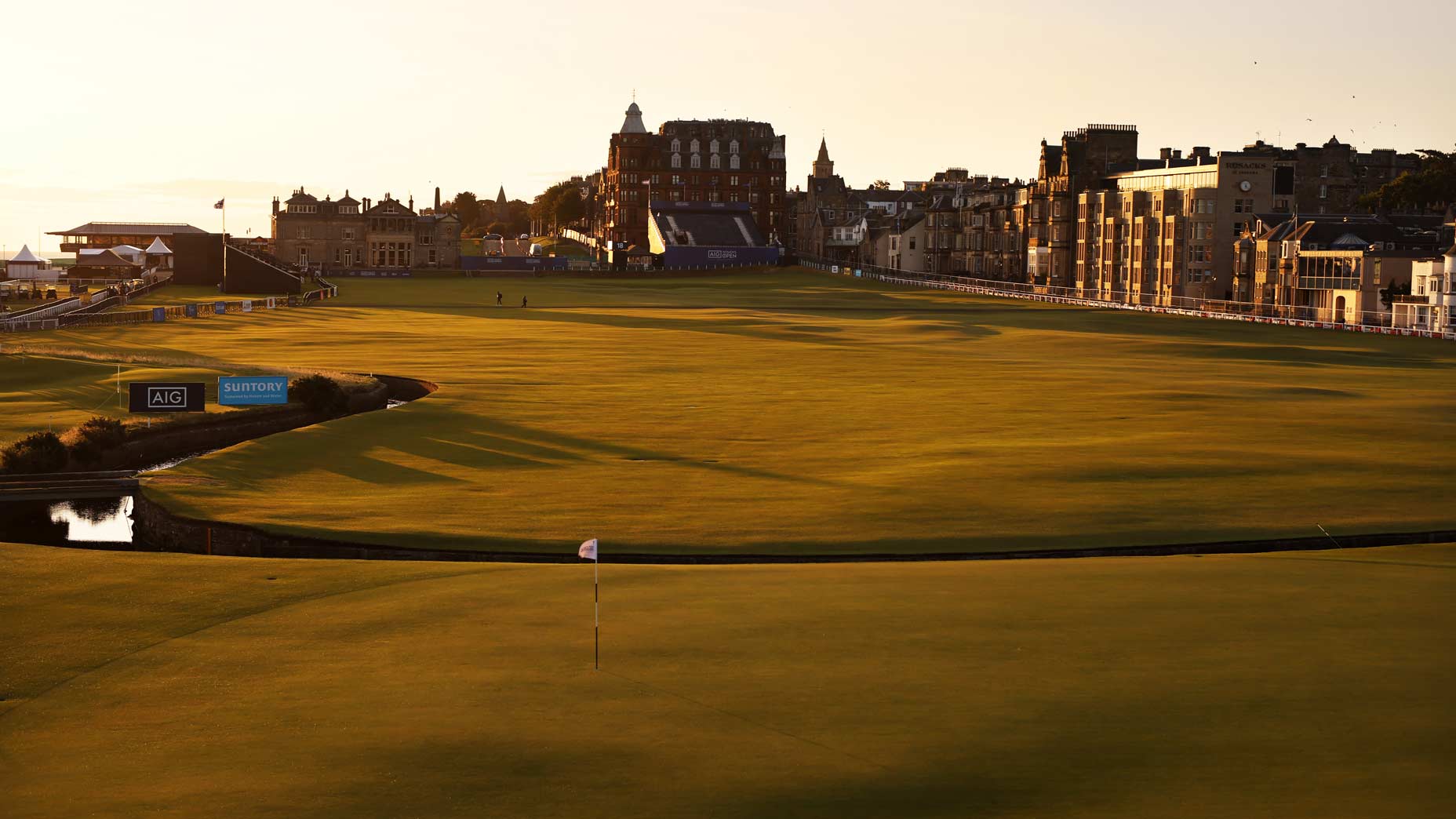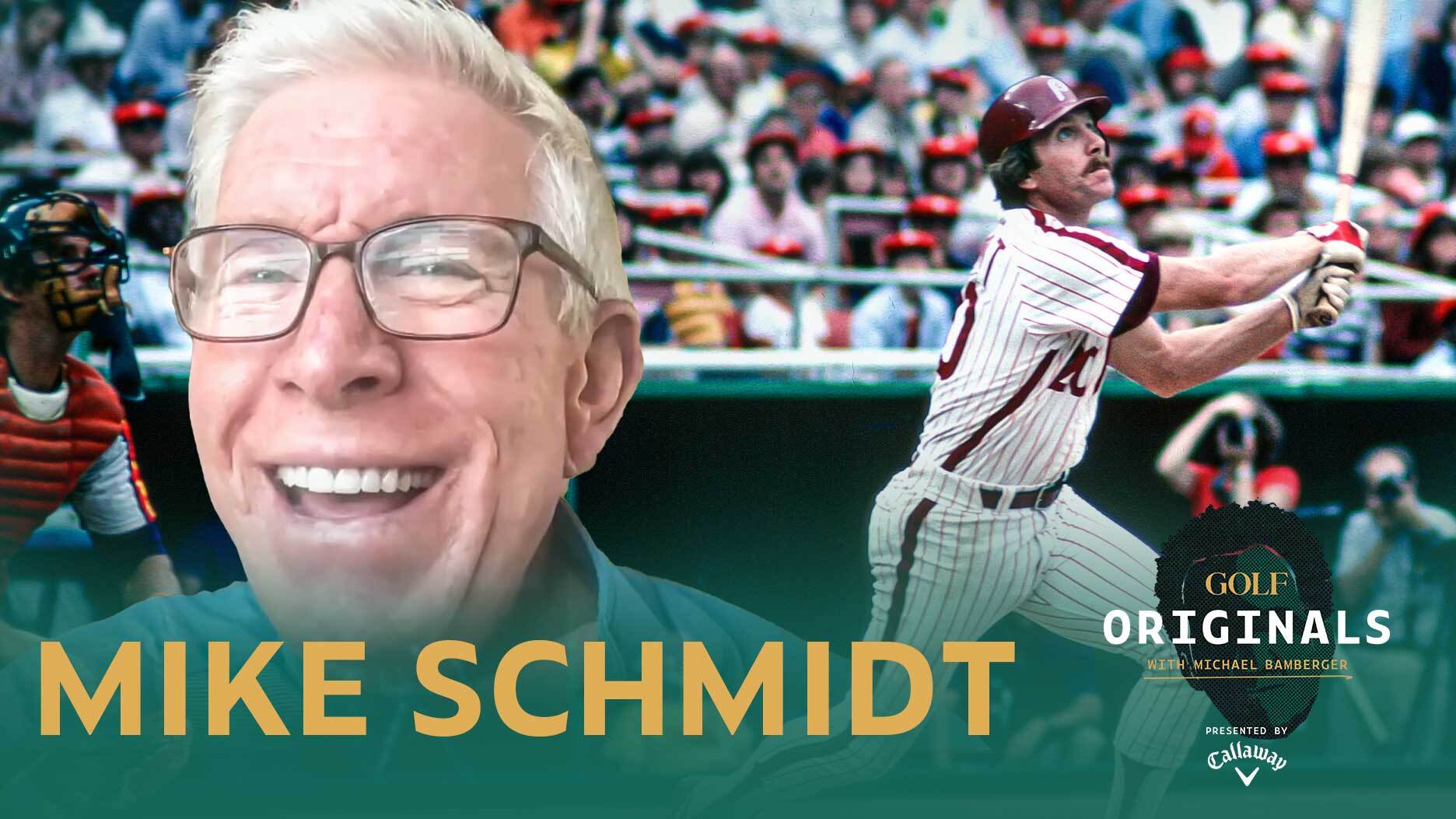SOUTHAMPTON, N.Y. — Picture this: a Tour pro faces a downhill chip from the rough, shortsided, with water lurking past the pin. He has no way to be sure he’ll control the speed of his shot, but he knows he’ll get it on a decent line, so he sends the chip on its way and takes off in a run towards the hole. As that chip rolls past the pin he’s there to receive it, effectively alley-ooping the ball towards (or even into!) the hole, accepting the two-shot penalty and moving on rather than facing a drop and potential disaster.
That bizarre hockey-style strategy is what the USGA effectively endorsed with its decision to penalize, rather than disqualify, Phil Mickelson after intentionally redirecting his ball as it cruised past the hole. Mickelson was explicit after the round about his intentions: he meant to do it. “I took the two-shot penalty and moved on. It’s my understanding of the rules. I’ve had multiple times where I’ve wanted to do that. I just finally did.”
Mickelson didn’t quite convert on the alley-oop; he waited until his ball was nearly eight feet past the hole and his putback lipped out. But if he’d nudged the ball in from closer range, he would have made an 8. If instead he’d allowed the ball to roll off the front of the green, pitched back up and two-putted, it also would have been an 8, but with many other possibilities including a multiple-chip mega-disaster.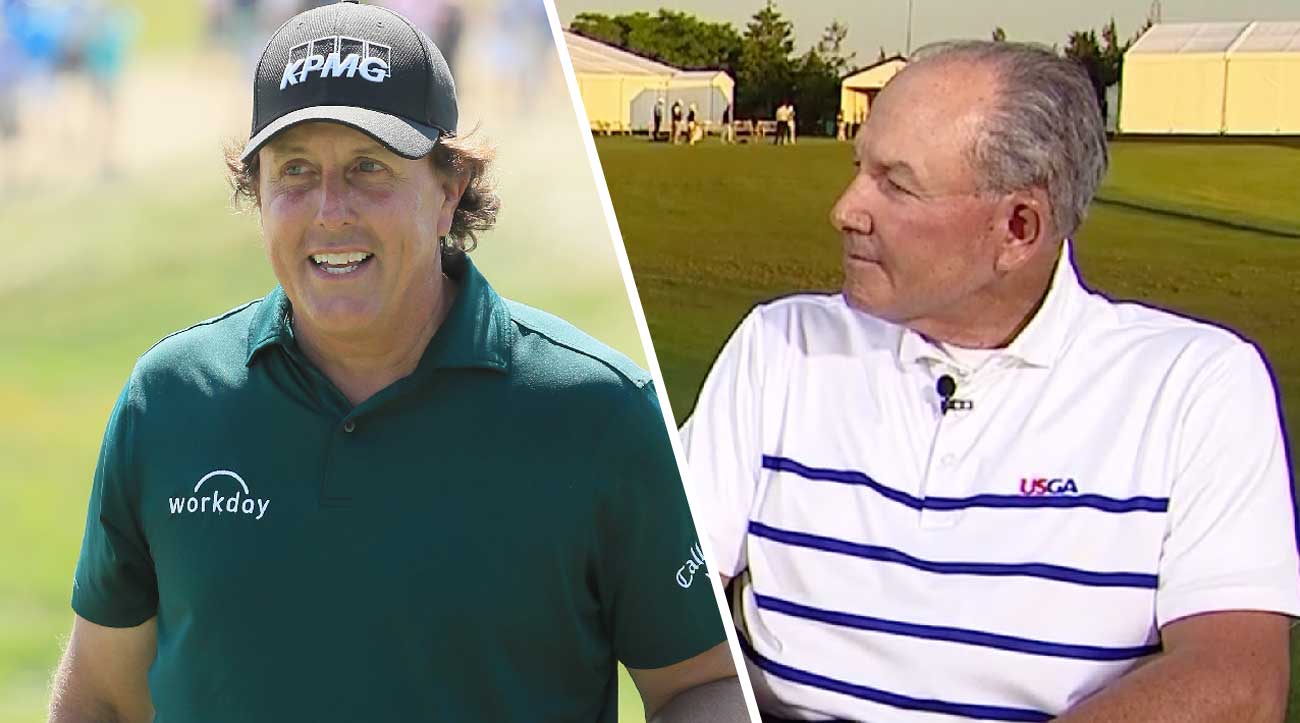
The rules committee decided to go with Rule 14-5, which is explicitly clear: “A player must not make a stroke at his ball while it is moving.” The punishment is a two-stroke penalty, no questions asked. But wouldn’t a more logical rule have been 1-2, which dictates that “a player must not take an action with the intent to influence the movement of a ball in play?” Mickelson explicitly stated that was his intention, and the rule includes a provision for gaining “significant advantage.” But the USGA got caught up in language and decided that the ball wasn’t “deflected or stopped” (What does “deflect” mean, exactly? Discuss amongst yourselves). As a result, intent didn’t matter. Strategy didn’t either. Instead, what Phil did is an actual option players can now consider.
USGA Senior Managing Director of Championships John Bodenhamer confirmed this interpretation when he declared that the USGA didn’t consider any of the outside factors besides this one: “The fact that we dealt with was that he made a stroke at a moving ball,” he said, then reiterated the point. “We are operating strictly under 14-5. It’s pretty clear he played a moving ball. It’s simply that we’re operating on what we saw.”
It’s clear that Mickelson has considered this before. As for his playing partner, Andrew “Beef” Johnston?
“No, no. I don’t think anyone has,” he said. “And that’s why it was so strange, because I don’t think anyone had them thoughts. No one ever has them thoughts.”
Now, players will at least consider it, even just for a moment. It’s unlikely anyone else will have Mickelson’s Belichickian boldness to try it, given the firestorm that has ensued. But there are ways it could lead to some competitive benefit. What if Sergio Garcia had raced around No. 15’s pond this year at Augusta to stop his ball before it rolled back into the water for a third, fourth, or fifth time? I think he’d have happily done so.
“I would gladly take the two shots over continuing that display,” Mickelson concluded. Now, thanks to Saturday’s ruling, others will have the option to make that same calculus. Johnston called it a “moment of madness.” It was that indeed; a bizarre, unique moment on one of Shinnecock’s slippery slopes.



